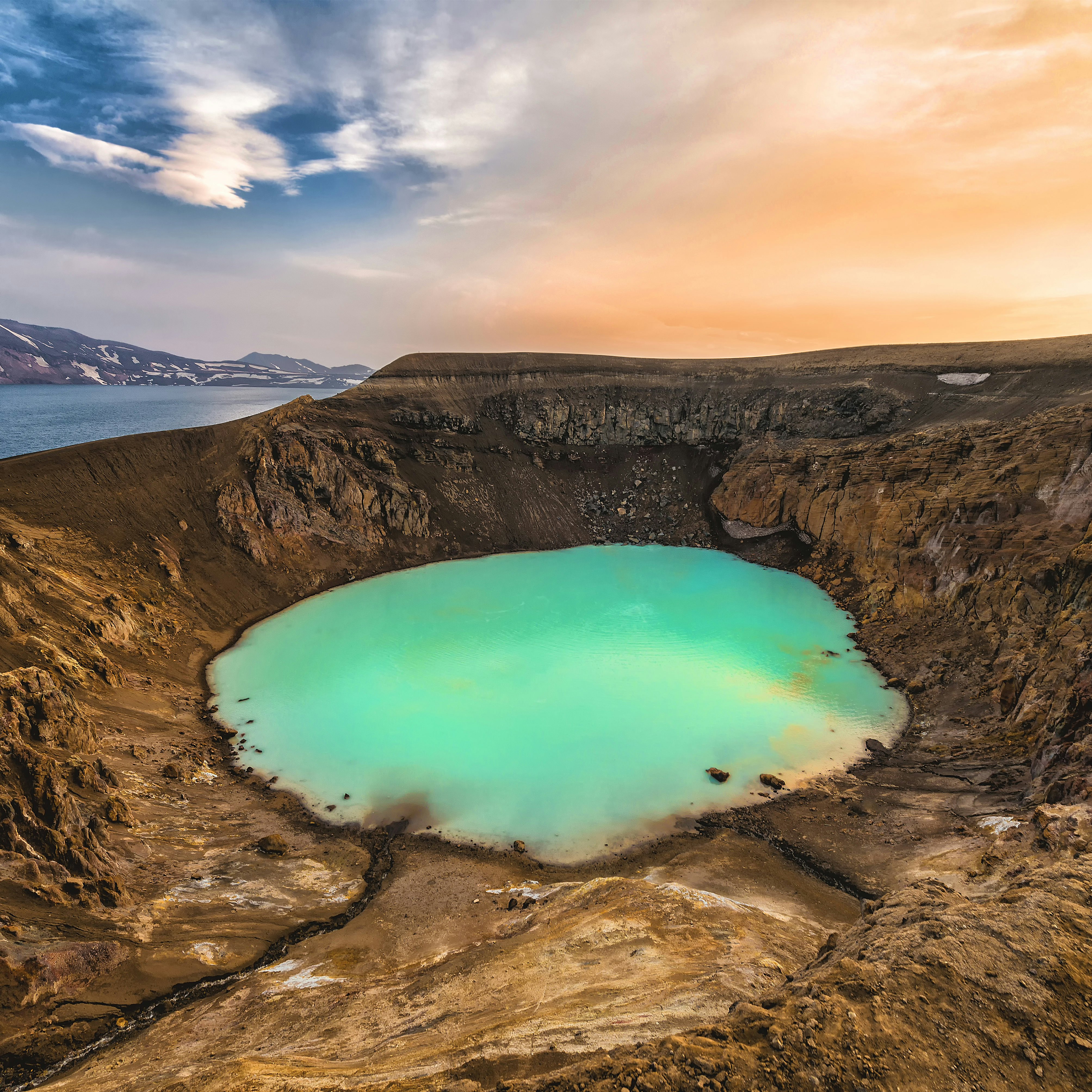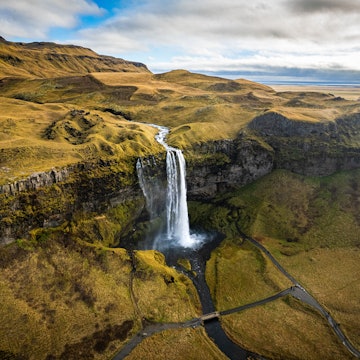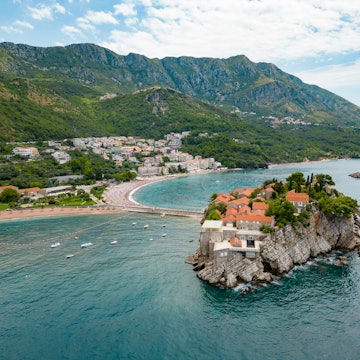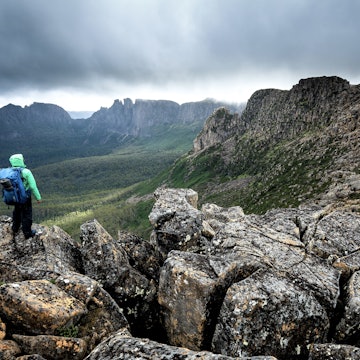
From geysers to guillemots: the 10 best natural wonders in Iceland

Sep 17, 2021 • 4 min read

Jökulsárlón lagoon is just one of the many amazing natural wonders to behold in Iceland © Matt Munro / Lonely Planet
Iceland's natural beauty is renowned. At times it seems as if everywhere you look there's yet another breath-taking mountain vista, wind-whipped beach or thundering waterfall – the cascading water perfectly framed by rugged cliffs and falling neatly into a turquoise pool below.
Choosing the country's top outdoor highlights then, was no easy feat. But we believe we have managed it. Ranging from seeing guillemots in full flight to gawping at geysers mid-spurt (plus catching a glimpse of a rather famous cosmic lightshow!), here's our pick of the best natural wonders in Iceland.

Skógafoss
This 62m-high waterfall topples over a rocky cliff at the western edge of Skógar in dramatic style. Climb the steep staircase alongside for giddy views, or walk to the foot of the falls, shrouded in sheets of mist and rainbows. Legend has it that a settler named Þrasi hid a chest of gold behind Skógafoss.
Reynisfjara
The black-sand beach Reynisfjara near Vík is backed by an incredible stack of basalt columns that look like a magical church organ, and there are outstanding views west to Dyrhólaey. Surrounding cliffs are pocked with caves formed from twisted basalt, and puffins belly-flop into the crashing sea during summer. Immediately offshore are the towering Reynisdrangur sea stacks. However, with beauty comes danger; people are regularly swept away on this beach, so be extra cautious.

Þórsmörk
Named after the Norse god Thor (Þór), this protected reserve is a hiker's paradise, with scenes seemingly plucked from an enchanting fantasy. The verdant realm is clasped by snowcapped mountain ridges, wild-flower-filled valleys, curling gorges, icy rivers and three looming glaciers (Tindfjallajökull, Eyjafjallajökull and Mýrdalsjökull), protecting this quiet spot from some of the region's harsher weather.
Geysers
One of Iceland’s most famous tourist attractions, Geysir (gay-zeer; literally ‘gusher’) is the original hot-water spout after which all other geysers are named and lies in the much-visited Golden Circle. Earthquakes can stimulate activity, though eruptions are rare. Luckily for visitors, the very reliable geyser, Strokkur, sits alongside it. You rarely have to wait more than five to 10 minutes for the hot spring to shoot an impressive 15m to 40m plume.

Hornstrandir Nature Reserve
Craggy mountains, precarious sea cliffs and plunging waterfalls make up Hornstrandir, one of Europe’s last true wilderness areas, covering some of the most extreme parts of Iceland. It’s a fantastic destination for hiking, with challenging terrain and excellent opportunities for spotting Arctic foxes, seals, whales and teeming bird life. The area has some of the strictest preservation rules in Iceland, thanks to its incredibly rich, but fragile, vegetation.
Northern Lights
Everyone longs to glimpse the Northern Lights, the celestial kaleidoscope known for transforming long winter nights into natural lava lamps. The lights, also known as Aurora Borealis, form when solar flares are drawn by the earth’s magnetic field towards the North Pole. What results are ethereal veils of green, white, violet or red light, shimmering and dancing in a display not unlike silent fireworks.

Látrabjarg Bird Cliffs
These renowned, dramatic cliffs are mobbed by nesting seabirds in early summer. Unbelievable numbers of puffins, razorbills, guillemots, cormorants, fulmars, gulls and kittiwakes nest here from June to mid-August. It's best to visit in the evening, when the birds return to their nests. On calm days, seals are often seen basking on the skerries around the lighthouse.

Askja
The utterly remote and inspiring volcanic hollow is the main destination for all tours in this northeastern part of the highlands. This immense 50-sq-km caldera shouldn’t be missed and your first glimpse of the sapphire-blue lake Öskjuvatn, at the heart of the crater, is guaranteed to be a memorable one. The lake stands in contrast to the milky waters inside the small, steep crater known as Víti, which you can have a dip in if safety permits.

Jökulsárlón lagoon
A ghostly procession of luminous-blue icebergs drifts serenely through the 25-sq-km Jökulsárlón lagoon before floating out to sea, a surreal scene. The ice calves come from Breiðamerkurjökull glacier, an offshoot of the mighty Vatnajökull ice cap. Boat trips and kayaking among the bergs are popular, or you can simply wander the lakeshore, scout for seals and exhaust your camera’s memory card.
Snæfellsjökull
Snæfellsjökull National Park wraps around the rugged slopes of this glacier. When the fog lifts, you'll see the mammoth ice cap, made famous when Jules Verne used it as the setting for Journey to the Centre of the Earth. The peak was torn apart when the volcano beneath it exploded and then collapsed back into its own magma chamber, forming a huge caldera.
You might also like:
Driving Iceland's magic circle
8 Iceland activities for adventure seekers
Rescuing baby puffins in the Westman Islands
This article was first published on 23 July, 2020.















